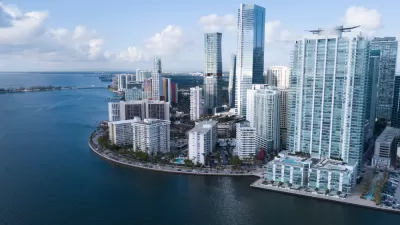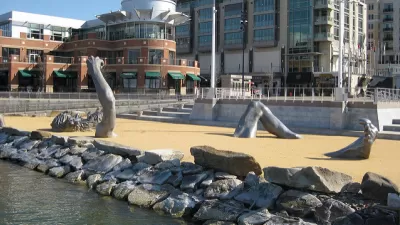Upzonings in working class neighborhoods usually provoke political opposition based on concerns about gentrification and displacement. But the new Wynwood Norte Neighborhood Revitalization District in Miami might have worked for a solution.
"Residents and property owners who banded together in the newly rechristened working-class neighborhood of Wynwood Norte have won Miami commissioners’ enthusiastic approval for an innovative plan that would tame looming gentrification by spurring development," reports Andre Viglucci.
"The Wynwood Norte Neighborhood Revitalization District, a special zoning plan approved on first reading by a 5-0 vote on Thursday, arose from a grassroots effort to reverse the historic residential enclave’s declining fortunes," adds Viglucci.
The NRD-2, as the district is also called, was created by Miami city planners based on earlier work by Wynwood Community Enhancement Association, PlusUrbia Design, and others to create the Wynwood North Community Vision Plan. The Miami City Council recognized the vision plan in November 2019, passing a resolution instructing city staff to study implementation—enter the Wynwood Norte Neighborhood Revitalization District.
The zoning changes included in the revitalization district "would allow Miami-Dade County’s housing agency, which owns several acres of underused land in the neighborhood, to expand its local stock of affordable and workforce housing," explains Viglucci.
To protect the community, "the plan aims to preserve the core and character of the neighborhood by placing stricter limits on demolitions and maintaining a low scale in residential areas," adds Viglucci.
More details on the community-led process that produced the vision plan and the revitalization district, the goals of the vision plan and revitalization district, as well as the history of planning and development in the area are included in the source article.
FULL STORY: To fight gentrification, a working-class Miami enclave wins plan to spur development

Maui's Vacation Rental Debate Turns Ugly
Verbal attacks, misinformation campaigns and fistfights plague a high-stakes debate to convert thousands of vacation rentals into long-term housing.

Planetizen Federal Action Tracker
A weekly monitor of how Trump’s orders and actions are impacting planners and planning in America.

San Francisco Suspends Traffic Calming Amidst Record Deaths
Citing “a challenging fiscal landscape,” the city will cease the program on the heels of 42 traffic deaths, including 24 pedestrians.

Defunct Pittsburgh Power Plant to Become Residential Tower
A decommissioned steam heat plant will be redeveloped into almost 100 affordable housing units.

Trump Prompts Restructuring of Transportation Research Board in “Unprecedented Overreach”
The TRB has eliminated more than half of its committees including those focused on climate, equity, and cities.

Amtrak Rolls Out New Orleans to Alabama “Mardi Gras” Train
The new service will operate morning and evening departures between Mobile and New Orleans.
Urban Design for Planners 1: Software Tools
This six-course series explores essential urban design concepts using open source software and equips planners with the tools they need to participate fully in the urban design process.
Planning for Universal Design
Learn the tools for implementing Universal Design in planning regulations.
Heyer Gruel & Associates PA
JM Goldson LLC
Custer County Colorado
City of Camden Redevelopment Agency
City of Astoria
Transportation Research & Education Center (TREC) at Portland State University
Jefferson Parish Government
Camden Redevelopment Agency
City of Claremont





























